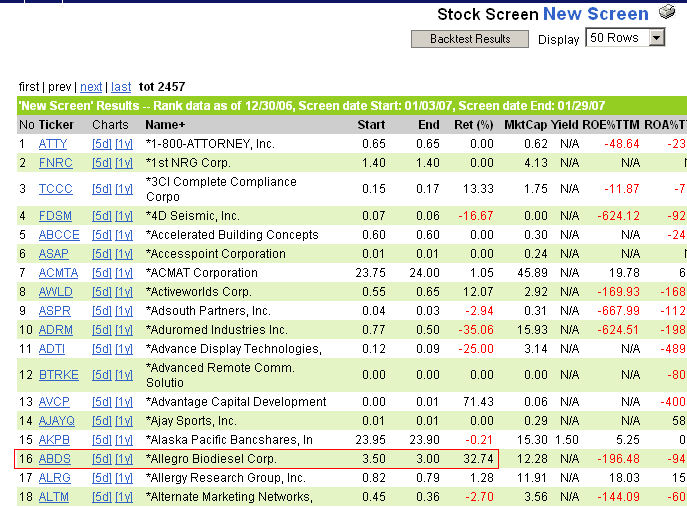If you want an overview of the Zacks system in an easy to read format, have a look at Mitch Zacks, “A Head of the Market: The Zacks Method for Spotting Stocks Early–In any Economy”. I got my copy through Amazon’s 2nd hand resellers since it appears to be out of print.
EXECUTIVE SUMMARY:
Zachs focuses on a narrow, but important factor. However, it ignores other factors of equal or greater importance such as valuation metrics and price momentum. Also the Zacks method excludes stocks that do not have analyst coverage by major brokerages.
On the other hand, Zacks focus on earnings is an approach that may make the foundation for a new class of Pq123 strategies that would be complementary to the major P123 strategies that rely primarily on price momentum and low valuations. A diversity of methods is attractive.
A SUMMARY OF KEY PARTS OF THE BOOK
According to the book (which I have only quickly skimmed), the Zack’s rank is built on two factors both of which deal with earnings. The first and most important factor is upward revisions of earnings forecasts by analysts. According to his chart on page 102, stocks with negative changes in consensus earning estimates in the past month have annualized gains of 0.7% (next to zero), stocks with no change have 7.6% average gain, and stocks with a positive increase in consensus earnings estimates average 18%/yr. I think these numbers assume that your rebalance the portfolio each month or each quarter.
The second factor used in Zacks ranking is positive earnings surprises. Stocks that reported earnings with -1% and +1% of consensus estimates have average gain of 13.8%/year (1990 to 2002 study), stocks with earnings worse than -1% have 9.3%/year and stocks with earnings more than 1% above estimates give 16%/year. Chart on page 138.
The Zacks ranking includes both factors (I do not know if the book tells what weight each is given) and the stocks in Zacks #1 group (the top 5% of stocks) have an average gain of 31% (page 152 chart).
In its implementation section, the ideal seems to be to have at least 50 stocks in the portfolio which is about 1/4 of the stocks approximately 200 stocks that get into the top Zacks ranking.
SOME COMMENTS
The Zacks method focuses on earnings and especially on analyst expectation of earnings. Factor one just focuses on whether analyst earning estimates have gone up. Factor two, earning surprises, can only happen if there is an analyst estimate (no estimate then no surprise!). Thus Zachs will not rank a lot of the smaller stocks that P123 strategies do so well with.
The Zachs ranking, as far as my skimming of the book goes, does not look at valuation factors. Many if not most P123 ranking systems make a lot of use of one or more valuation factors (Price to earnings, price to cash flow, price to sales, Price to Book, etc.).
Given the above limitations of the Zachs method it is remarkably good. As others have pointed out, the Zacks database available to retail investors has a survivorship bias and other “issues”, but I think the basic idea is sound. AAII has forward tested (so no survivorship bias) the idea of increased consensus earnings estimates and has the following results:
13%/yr = Baseline (all exchange traded stocks)
17%/yr = stocks those earnings estimates were increased
25%/yr = 30 stocks with the highest increases in estimates
28%/yr = stocks with more than 5% increases in estimates
AAII test looked at stock price increases over the next month. The yearly gains are from my calculations given the raw monthly data from AAII for their strategies.
Given the AAII results for earnings revisions, I tend to accept the Zacks results in general terms.
CONCLUSION (same as EXECUTIVE SUMMARY)
Zachs focuses on a narrow, but important factor. However, it ignores other factors of equal or greater importance such as valuation metrics and price momentum. Also the Zacks method excludes stocks that do not have analyst coverage by major brokerages.
On the other hand, Zacks focus on earnings is an approach that may make the foundation for a new class of Pq123 strategies that would be complementary to the major P123 strategies that rely primarily on price momentum and low valuations. A diversity of methods is attractive.
